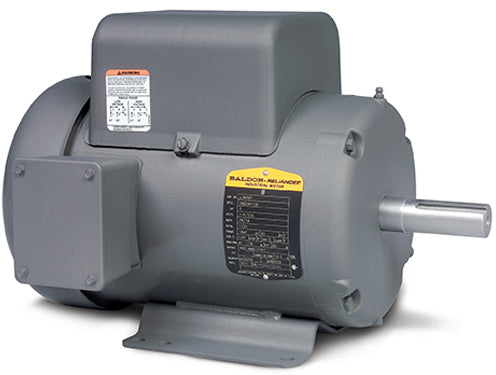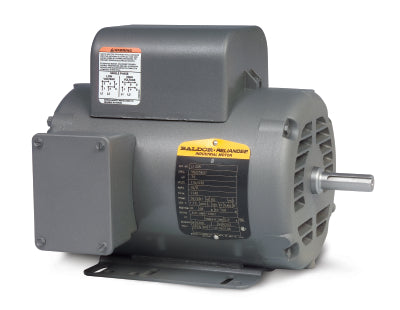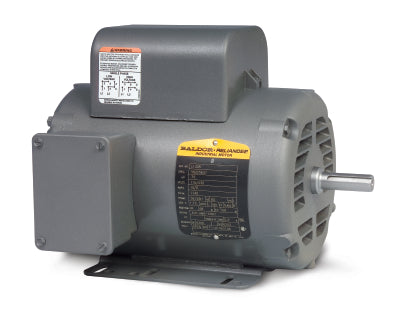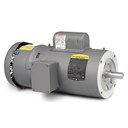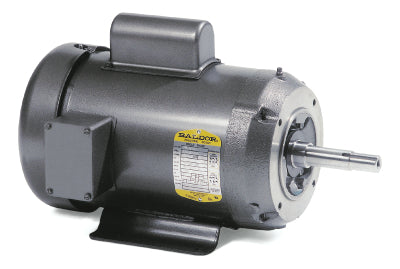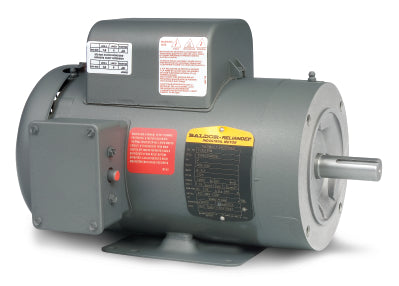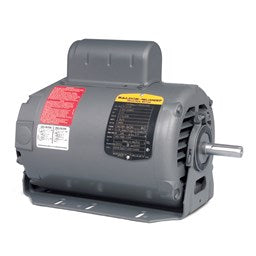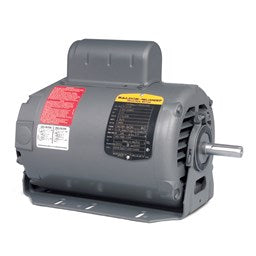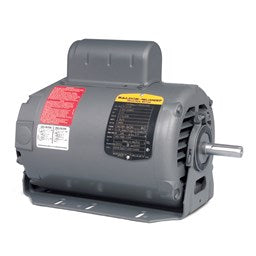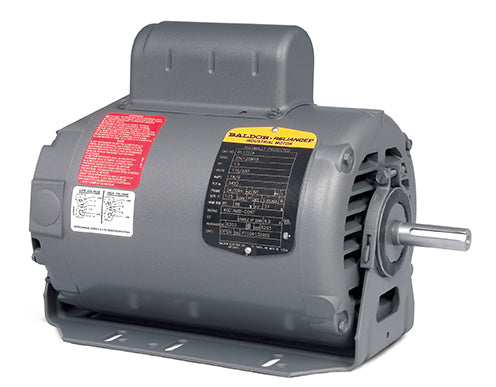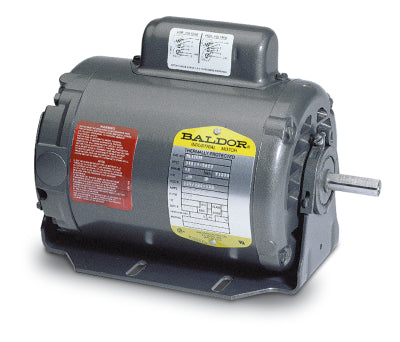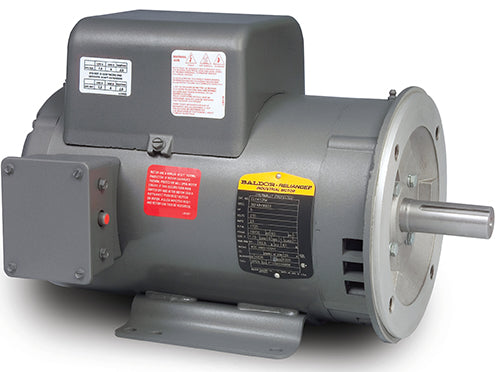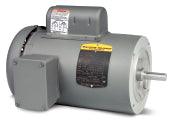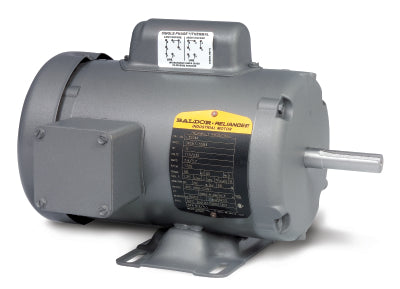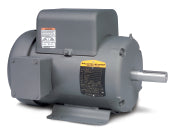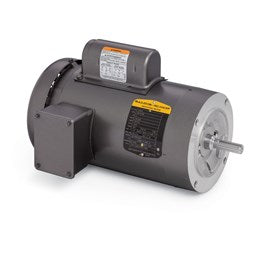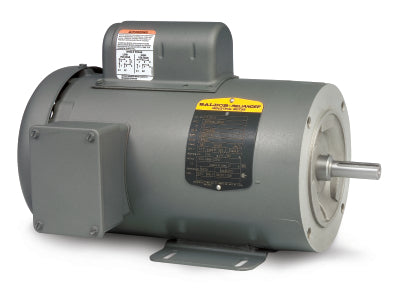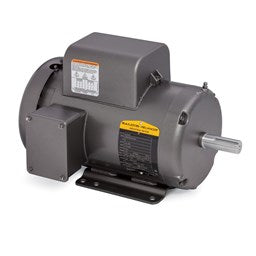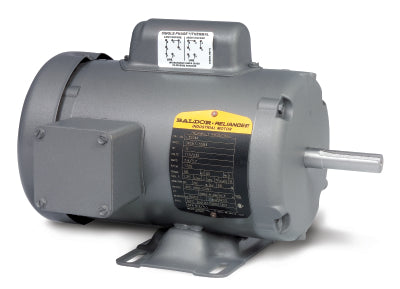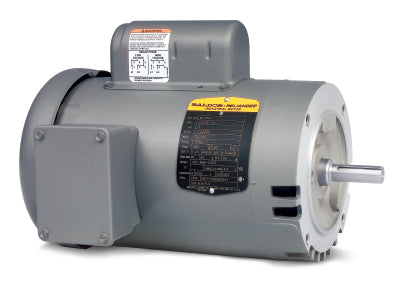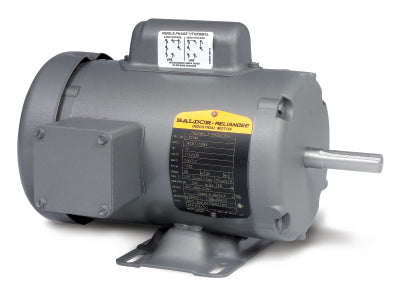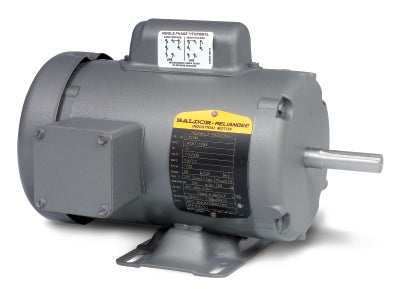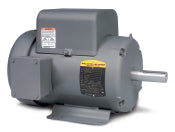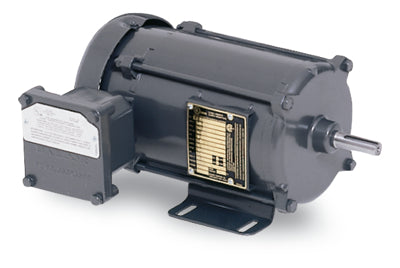410 Products
Collection: Baldor Single Phase Motors
Baldor Electric Company, owned by ABB, is a global electric motor manufacturer with a strong reputation for quality products and service. Their extensive product line includes single phase motors for commercial and industrial uses, including:
Each single phase AC motor meets or exceeds energy efficiency requirements for the United States, Canada, and Mexico. Their electrical motors deliver high starting torque, overload capability, and excellent reliability.
Baldor’s General Purpose motors are also available in different enclosure constructions, from industrial steel band open designs for low dirt and moisture environments, to totally enclosed cast iron designs for wet, dirty, and corrosive applications.
Super-E® motors provide NEMA Premium efficiency and are Inverter ready with wide variable torque speed ranges as standard.
Buying a Replacement Baldor Motor
Need a new single phase motor? Baldor offers a wide range of options for enclosure, voltage, horsepower (up to 16hp), and mounting (base, cradle, c-face footed and footless).
Best of all, Baldor maintains great inventory, so most of their motors are on the shelf, ready to ship!
More supportive data can also be found at baldor.com, including data sheets, connection diagrams, installation manuals, energy efficiencies, and other specs.
Square One is an authorized Baldor distributor. Each motor ships direct from a Baldor warehouse and has their warranty.
Click here for more information on Baldor’s warranty.
Reading a Motor Nameplate
When replacing an electric motor, especially if crossing to a different brand, be sure to match key components from the motor nameplate.
- Horsepower - The plate says HP or KW (kilowatts) depending on whether you are running a NEMA or Metric machine; small fan motors may read in watts. It is okay to go up in horsepower if you want more power, just remember to consider the frame size – the motor needs to fit! Do not down in horsepower.
- Frame - Motor frames indicate important construction information, such shaft height and diameter. Generally, letter prefixes aren’t important, but suffixes do have meanings.
- RPM - Oftentimes we hear from customers; “I need an 1800RPM motor but this one says 1760 on the nameplate.” Short answer; “Same thing.” The most common speeds are 2-8 poles. Now, say you have a 5 hp air conditioning fan motor that says 1785RPM on the nameplate - that’s 1800. Nameplate says 3450 RPM? That’s 3600. 1160 RPM? You have 1200.
- Enclosure (ENC) - There are many types of motor enclosures, each designed for specific applications. Is the motor outside or inside, in a clean location or dirty? These elements determine the motor's enclosure, the most common types being ODP, TEFC, OAO, TE, and TEAO.
- Voltage - Utilities in the United States run on 60 cycles, and provide power in multiples of 120 volts. The most common voltages are 120, 240, 480, and 600. In 60 cycle motors, voltage standards have been selected in multiples of 115 volts (115, 230, 460 and 575 volts). Equipment is typically able to handle a voltage variation of plus or minus 10% of the nameplate rating. For example, motors rated for 200 volts can operate successfully down to 180 volts, or up to 220 volts.
- Rotation - So you have a small fan or refrigeration motor that needs to be replaced, and you think you have it. The main information matches and the picture looks like your motor, but what are those letters, CWLE? Is that important? What you've discovered is something that trips up a lot of people trying to replace equipment - motor rotation. Your old motor spins clockwise, but you order a counterclockwise unit. It happens - a lot. And, while it is possible to reverse motor rotation with connections, doing so on single phase motors is somewhat trickier than with three phase motors. It's much easier to just get the right rotation in the first place! Determining the rotational direction also depends on which way you are looking at the motor - most people look at the drive (shaft) end. If the nameplate is illegible, you can also look for an arrow on the motor.
Contact us if you need assistance with picking the right motor, replacing your motor, finding a motor cross reference, or buying motor parts to repair your motor.

